How To Integrate Google Sheet With Any App
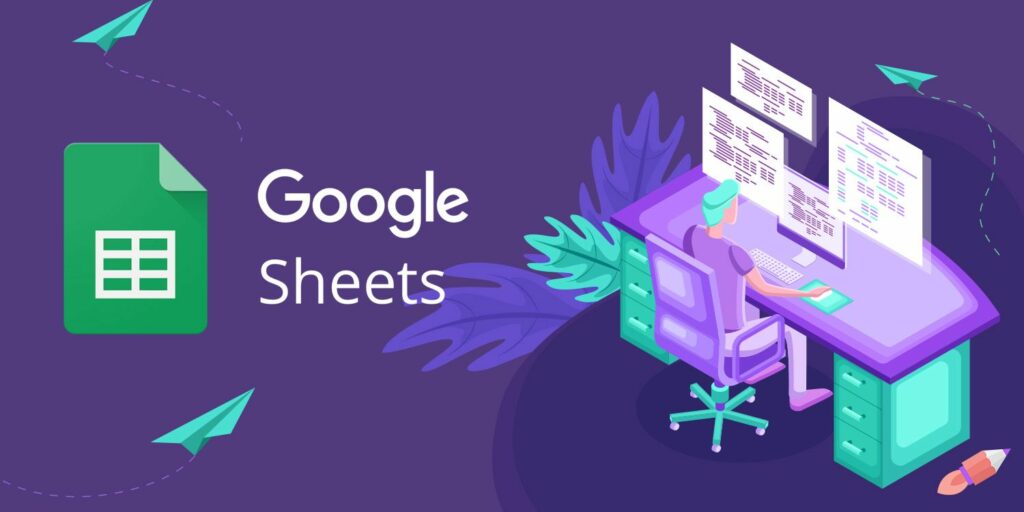
Google Sheets is a powerful cloud-based spreadsheet application that can be even more powerful when integrated with other applications. This allows you to automate tasks, streamline your workflows, and get a more complete view of your data.
Wiresk is a workflow automation platform that makes it easy to connect Google Sheets to any application that has an API. This includes CRM systems, project management tools, and customer support software.
It is important before using Google Account as a listener to get a connection to it.
To do so, please follow these steps:
Click on “Create a Connection”
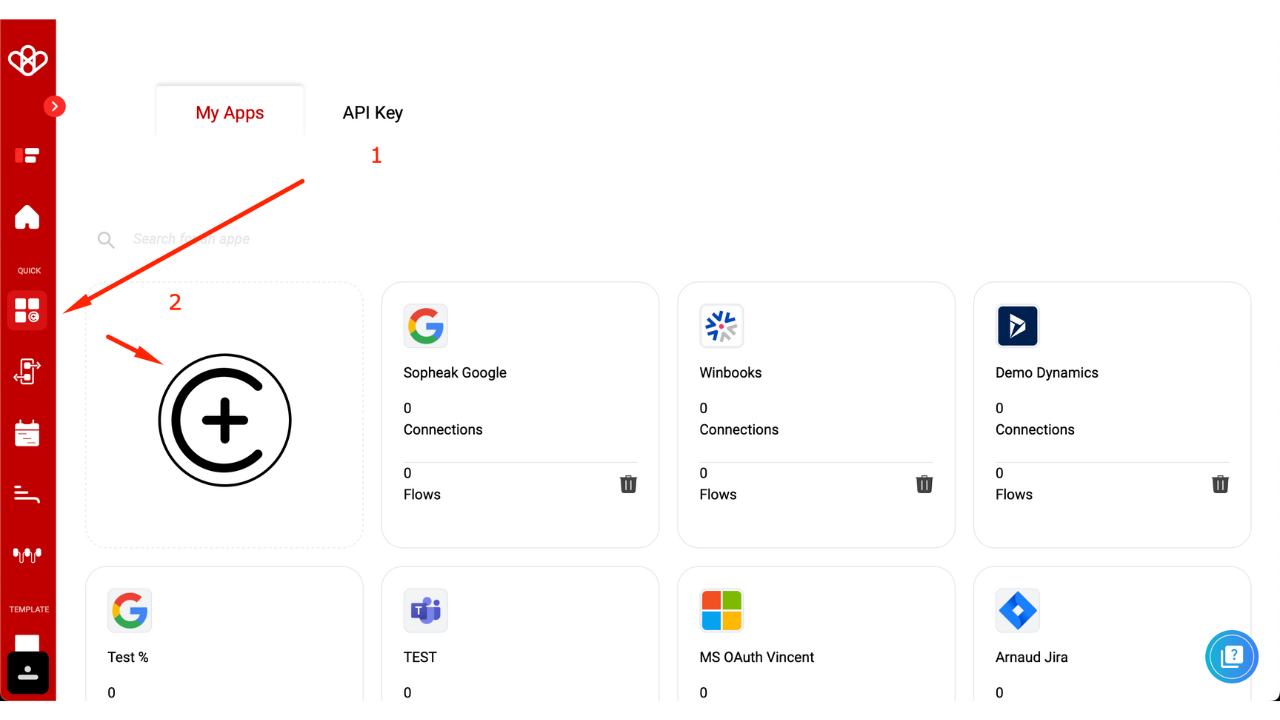
Choose a name for your connection.
Select the Google platform
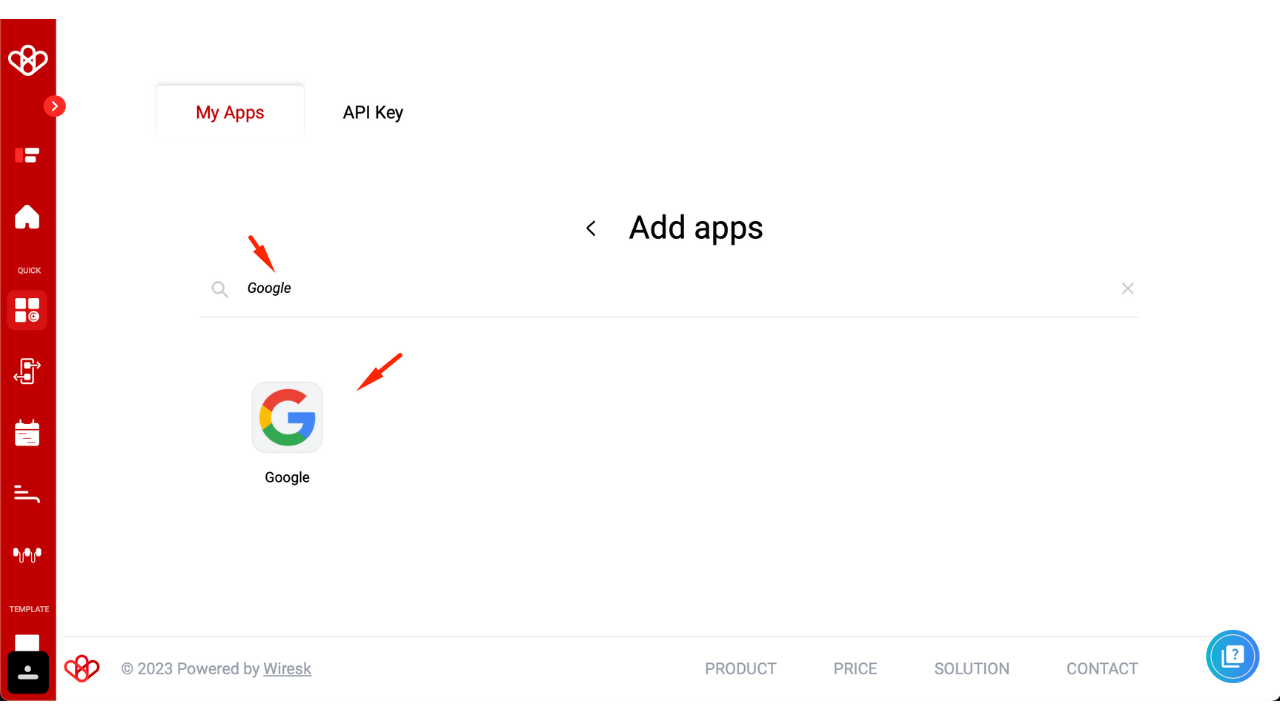
First of all, select the app need.
Don’t forget to name your connection, otherwise, the authorization will remain grayed out.
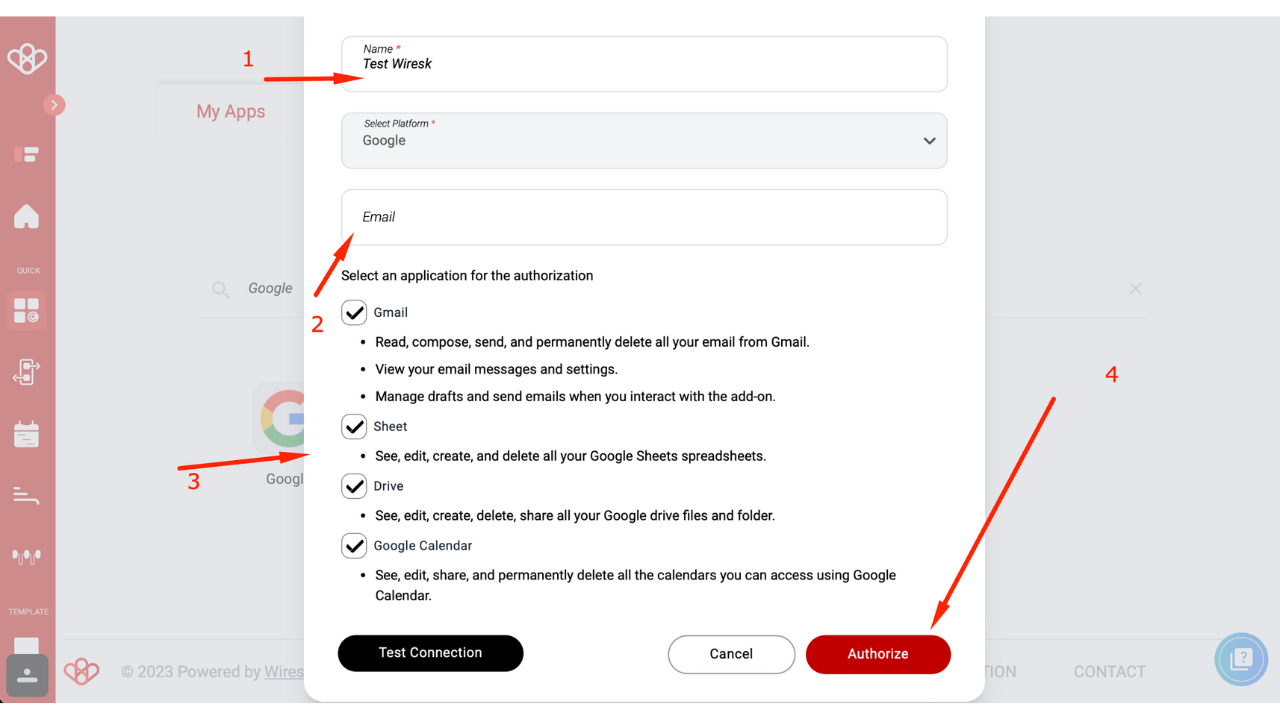
- Then, click on “Authorize”
- Choose the Google Sheet account
- Then, click on “Continue”
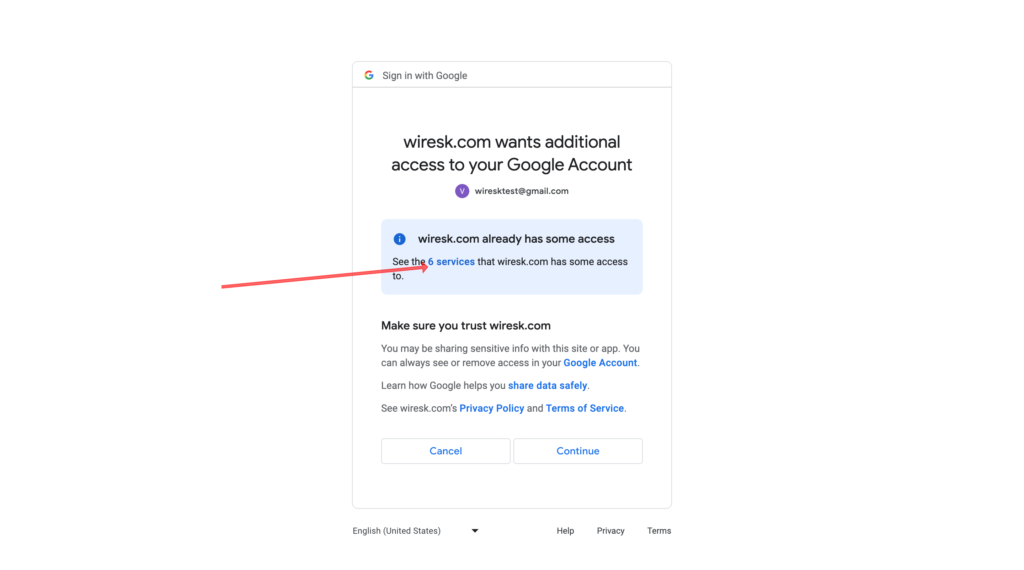
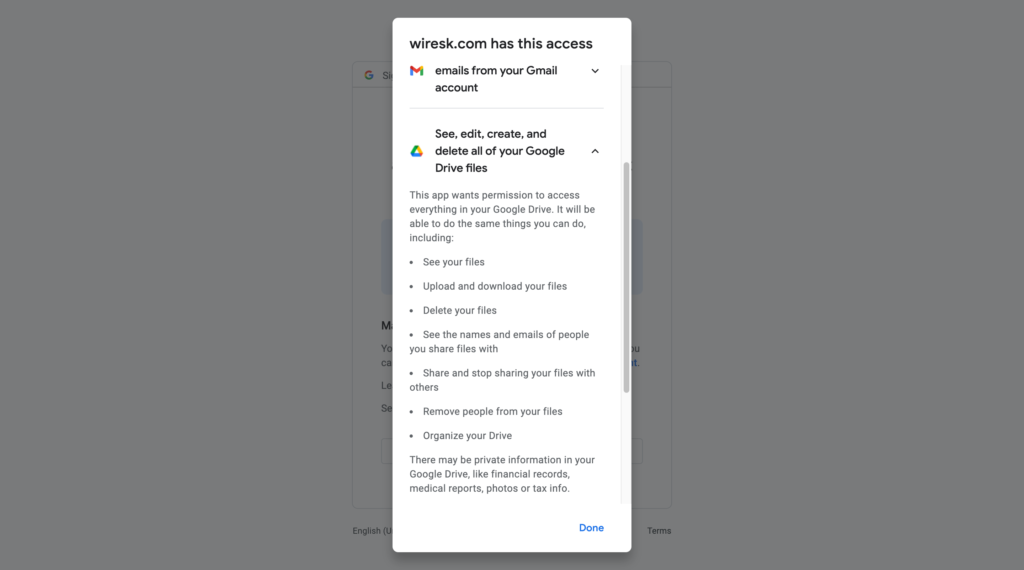
Then click on accept
Then go to Flow Tab and Click on Create Flow
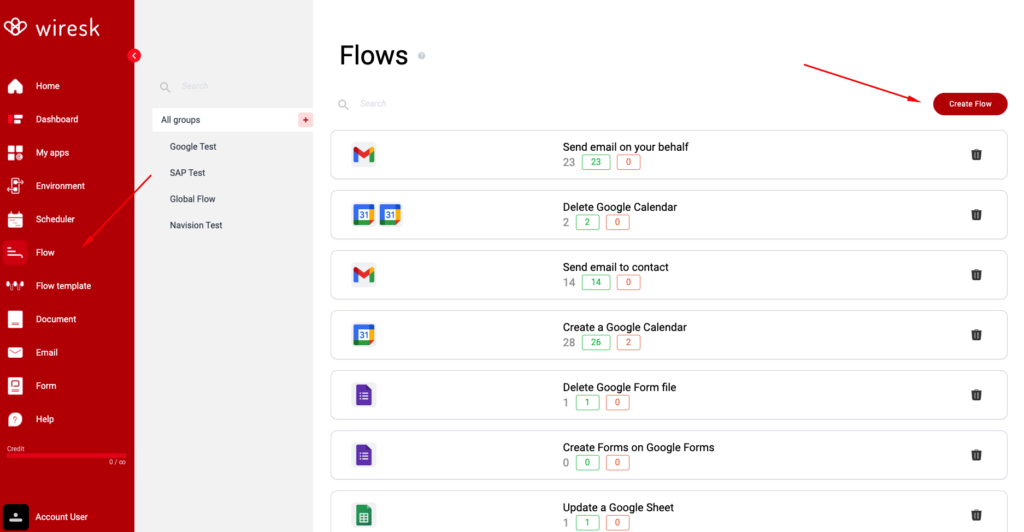
Define your Flow Name and assign to your Group
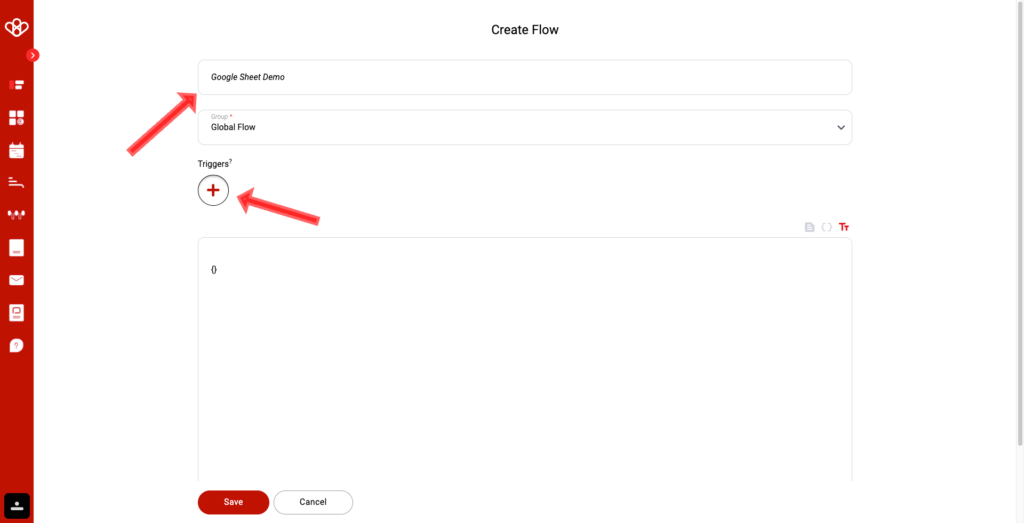
Select your Google Sheet Trigger
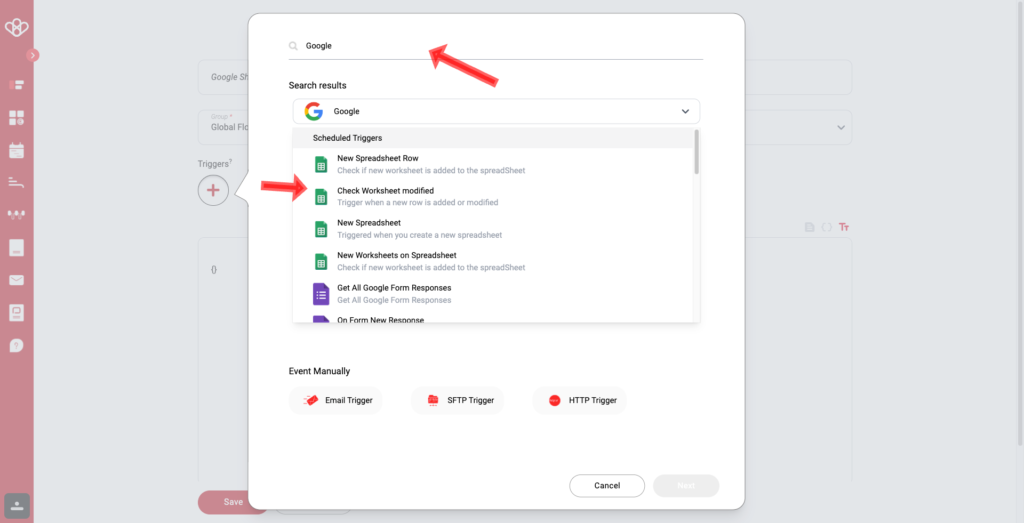
Then set up the triggers
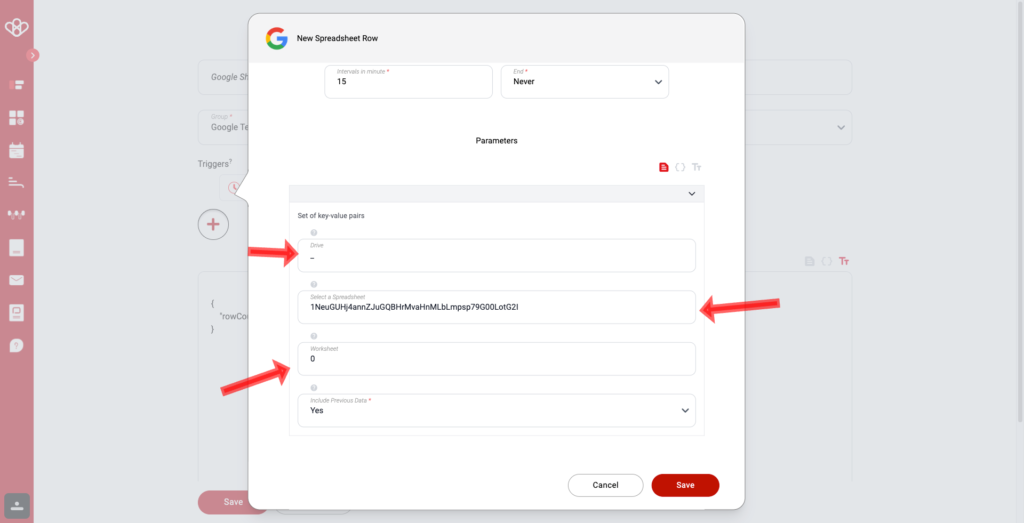
In Bold Mandatory Field
- Name of the Scheduler
- Select the Google Connection (The Connection we setup together, watch above)
- Define your timeout (is used to define when the scheduler restarts, and is useful on tasks with many requests, allowing the flow to be restarted without being blocked.)
- Then Schedule your reccurence rule (A recurrence rule for a scheduler is a set of rules that define how often a task should be repeated. It can be used to schedule tasks that need to be done on a regular basis, such as sending out a weekly newsletter or running a daily backup.)
- Frequency: How often the task should be repeated. This can be daily, weekly, monthly, or yearly.
- Interval: The number of times the frequency should occur before the task is repeated. For example, a weekly task with an interval of 2 would be repeated every other week.
- Start and end dates: The dates on which the task should start and end repeating.
- Than click on Parameters
- WARNING:
To set up your Google Root Account (Root = _ ), specify the root variable as the account name. Then, choose the name of the Spreadsheet and the Sheet you want to use. Additionally, indicate whether you wish to retain any existing data. - To find the Spreadsheet ID and Worksheet ID, you can follow these steps:
- Open the Google Sheets document.
- Look at the URL in the address bar of your browser.
- Find the part of the URL that comes after “/d/” and before “/edit”. This is the Spreadsheet ID. [1]
- To find the Worksheet ID, you need to look for the number that appears after “gid=” in the URL. For example, in the URL you provided, the Worksheet ID is “0”. [2]
- Please note that the Spreadsheet ID and Worksheet ID can be used to reference specific documents and sheets within Google Sheets.
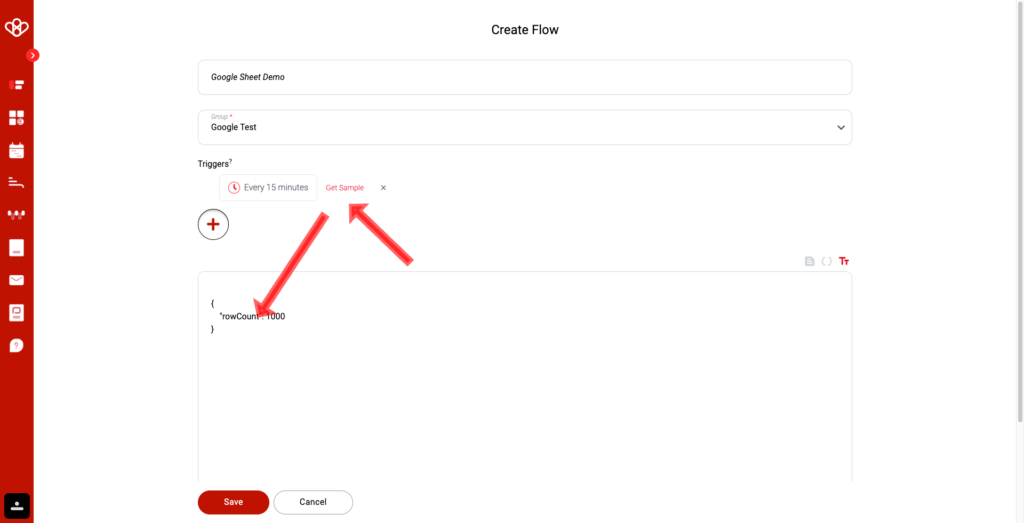
Here the data sample
Click on it to display a json sample
I will show you how to update Google Sheet contact list to CRM Odoo
Click on Save to go to the schema screen.
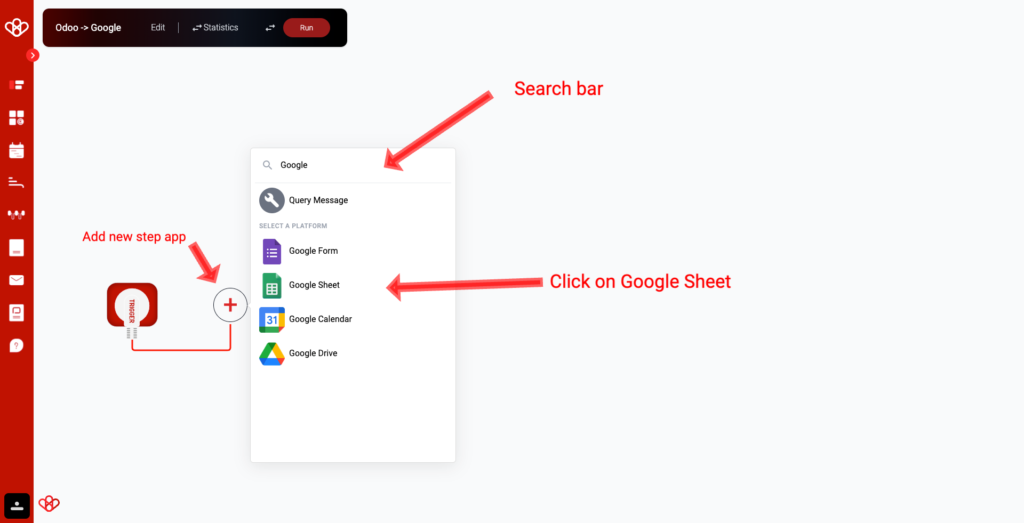
Create a step
Select Google Sheet
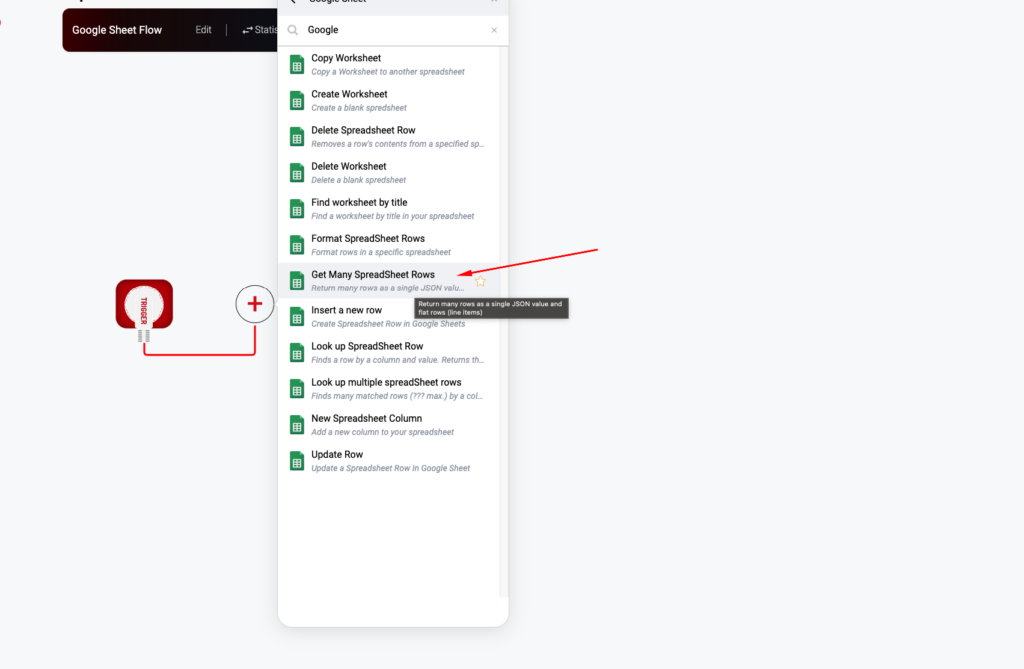
Select Get Many Spreadsheet Rows (to format a worksheet into Json object)
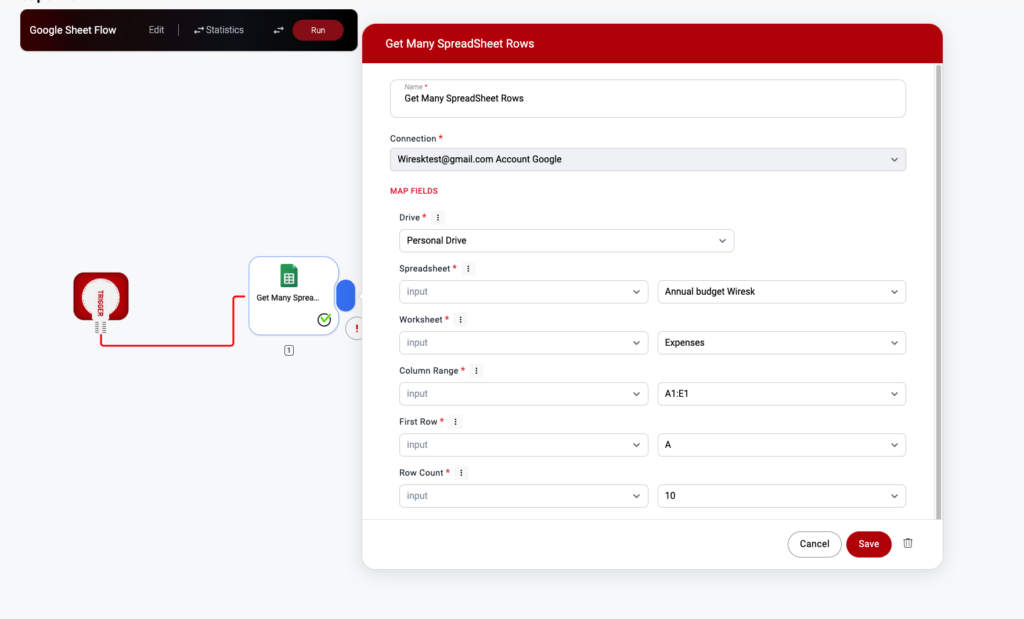
- Select the worksheet files
- Select the worksheet tab
- Select the column (always letter and number A1:E1 for example)
- Select first row (A)
- Define the number of time our system will count row
- Save
Then run the flow once

As you can see the object received is my google sheet in json format.
To explore additional complete flows, we encourage you to stick around and check out some of the various use cases we’ve identified below. You might find them quite intriguing!

Google Drive ORM Functions
Create
- Create a new spreadsheet to track your monthly expenses.
- Create a new spreadsheet to generate a list of products for your online store.
- Create a new spreadsheet to track the progress of a project.
Delete
- Delete old spreadsheets that you no longer need.
- Delete spreadsheets that contain sensitive information that you need to dispose of securely.
- Delete spreadsheets that have been accidentally corrupted.
Get
- Fetch a spreadsheet that contains your customer contact list.
- Fetch a spreadsheet that contains your budget for the next quarter.
- Fetch a spreadsheet that contains the results of a recent survey.
List
- List all of the spreadsheets in a specific folder.
- List all of the spreadsheets that have been shared with you.
- List all of the spreadsheets that have been modified in the past week.
Update
- Update a spreadsheet to track your spending for the current month.
- Update a spreadsheet to reflect the latest changes to your product inventory.
- Update a spreadsheet to update the status of a task in a project plan.
Upsert
- Create a new spreadsheet if it does not exist, or update an existing spreadsheet if it does exist.
- Use this operation to keep track of data that changes frequently, such as your customer contact list or your product inventory.
Here are some specific examples of how you could use Google Sheets to interact with file metadata:
- Create a spreadsheet to track the number of times each spreadsheet in a folder has been opened.
- Create a dashboard that shows the average time it takes users to complete a task in a project plan spreadsheet.
- Track changes to spreadsheet permissions over time.
- Identify users who have not accessed Google Sheets in the past 6 months.

Google Drive Integration Use Cases
Task Management
- Create tasks from Google Sheets by automatically adding them to a to-do list or project management system.
- Set due dates and priorities for tasks based on the contents of the Google Sheet.
- Assign tasks to team members and receive notifications when tasks are completed.
Collaboration
- Automatically share Google Sheets with team members or channels based on specific criteria, such as the owner, type, or location.
- Create shared folders and labels so that team members can easily collaborate on projects and spreadsheets.
- Receive notifications when team members comment on or reply to Google Sheets.
Customer Service
- Create templates for common customer inquiries so that you can respond quickly and efficiently.
- Track customer support tickets by creating Google Sheets for each ticket. Receive notifications when new tickets are created or when existing tickets are updated.
- Automatically assign tickets to the appropriate team members based on the customer’s issue.
Sales
- Create personalized Google Sheets for sales leads based on their interests and needs.
- Track sheet views and downloads to see which leads are most engaged.
- Automatically add leads to your CRM system when they download a sheet or view a shared folder.
Project Management
- Create project tasks from Google Sheets and automatically assign them to the appropriate team members.
- Receive notifications when project tasks are completed or when due dates are approaching.
- Share project sheets with team members by attaching them to Google Drive files or using the Google Calendar integration.
Example Use Cases
- A customer support team uses Google Sheets integration to automatically create Google Sheets for customer support tickets. This helps them to keep track of all tickets and ensure that they are resolved on time.
- A sales team uses Google Sheets integration to create personalized Google Sheets for sales leads. They also use integration to track sheet views and downloads to see which leads are most engaged. This helps them to focus their sales efforts on the leads that are most likely to convert.
- A project manager uses Google Sheets integration to create project tasks from Google Sheets and automatically assign them to the appropriate team members. They also use integration to receive notifications when project tasks are completed or when due dates are approaching. This helps them to keep track of the project and ensure that it stays on schedule.
These are just a few examples of how Google Sheets integration can be used to automate common business tasks and improve efficiency.
Additional Use Cases
- Marketing: Use Google Sheets integration to create and manage marketing materials, such as spreadsheets with data for marketing campaigns, social media posts, and email newsletters. Collaborate with team members to edit and review materials before they are shared with customers.
- Human Resources: Use Google Sheets integration to store and manage employee records, such as timesheets, performance reviews, and compensation data. Share employee records with authorized personnel, such as managers and recruiters.
- Finance: Use Google Sheets integration to store and manage financial records, such as budgets, invoices, and expense reports. Collaborate with team members to review and approve financial records.
Here is a specific example of how Google Sheets integration can be used for task management:
A marketing team uses Google Sheets integration to create a spreadsheet of all of the marketing tasks that need to be completed for a new product launch. The spreadsheet includes the task name, due date, priority, and assignee. The team then uses Google Sheets integration to automatically create tasks in their project management system from the spreadsheet. This allows the team to easily track the progress of all of the tasks and ensure that they are completed on time.
Google Sheets integration can be a powerful tool for automating tasks, streamlining workflows, and improving efficiency in a variety of business functions.
If you have any questions please contact us at contact@wiresk.com
